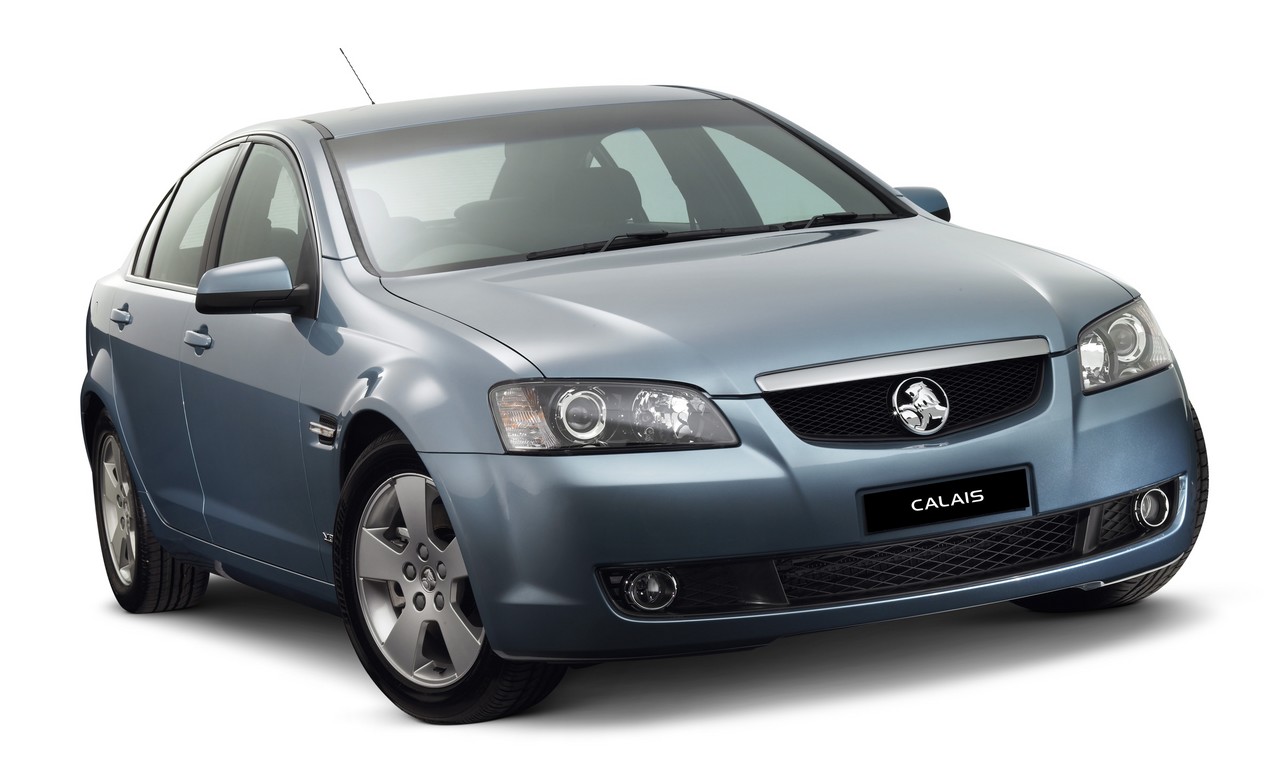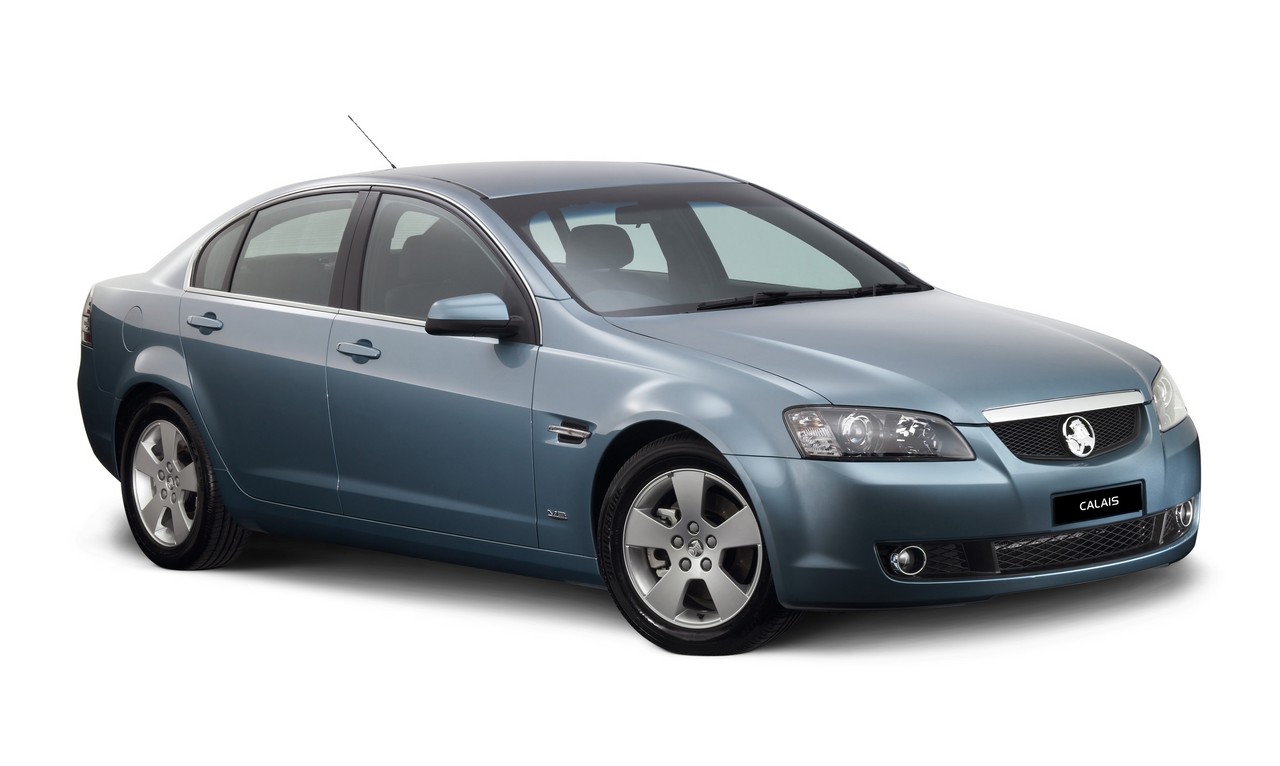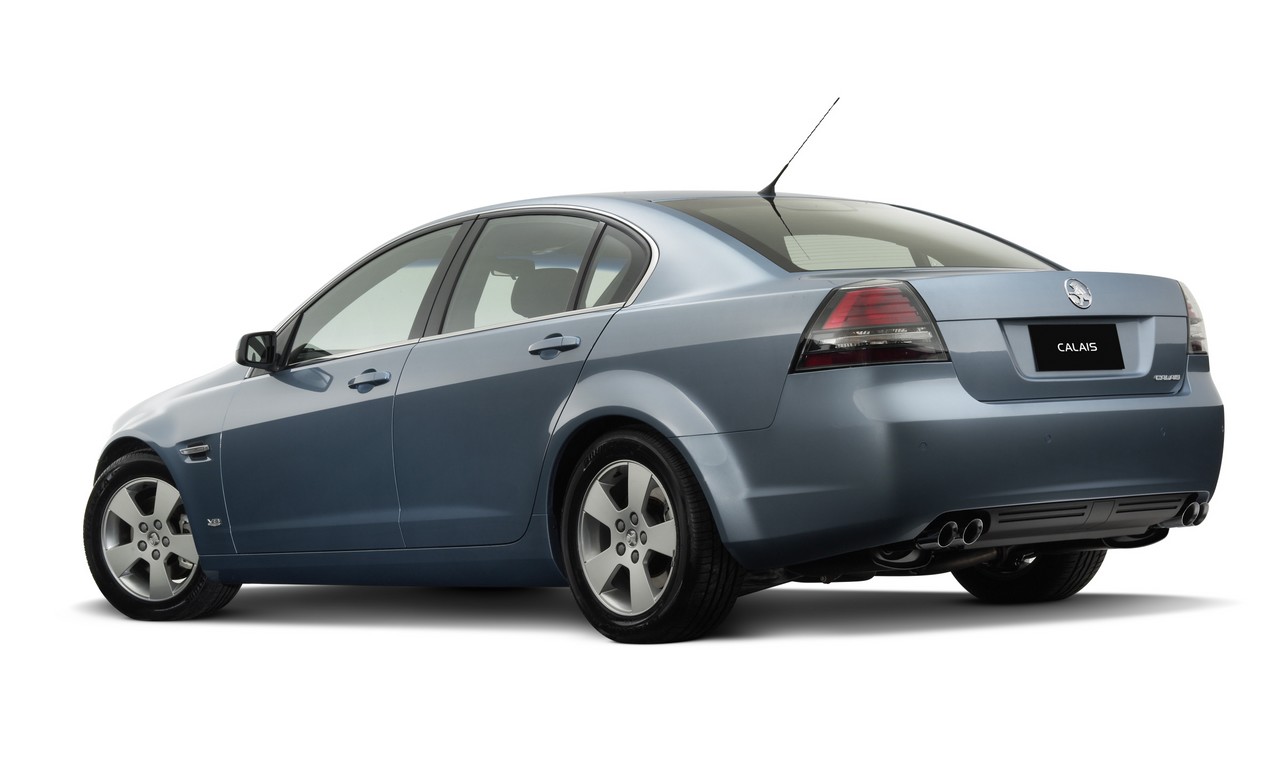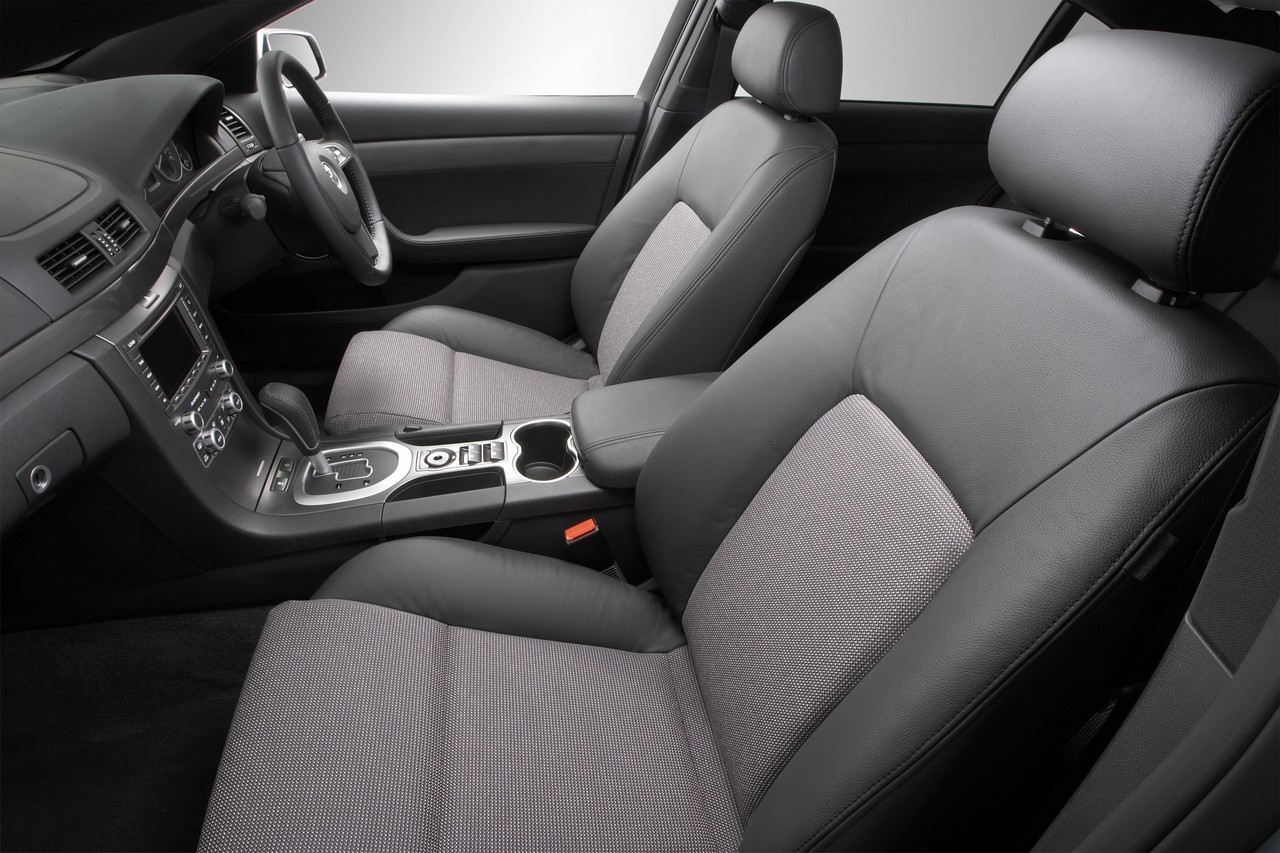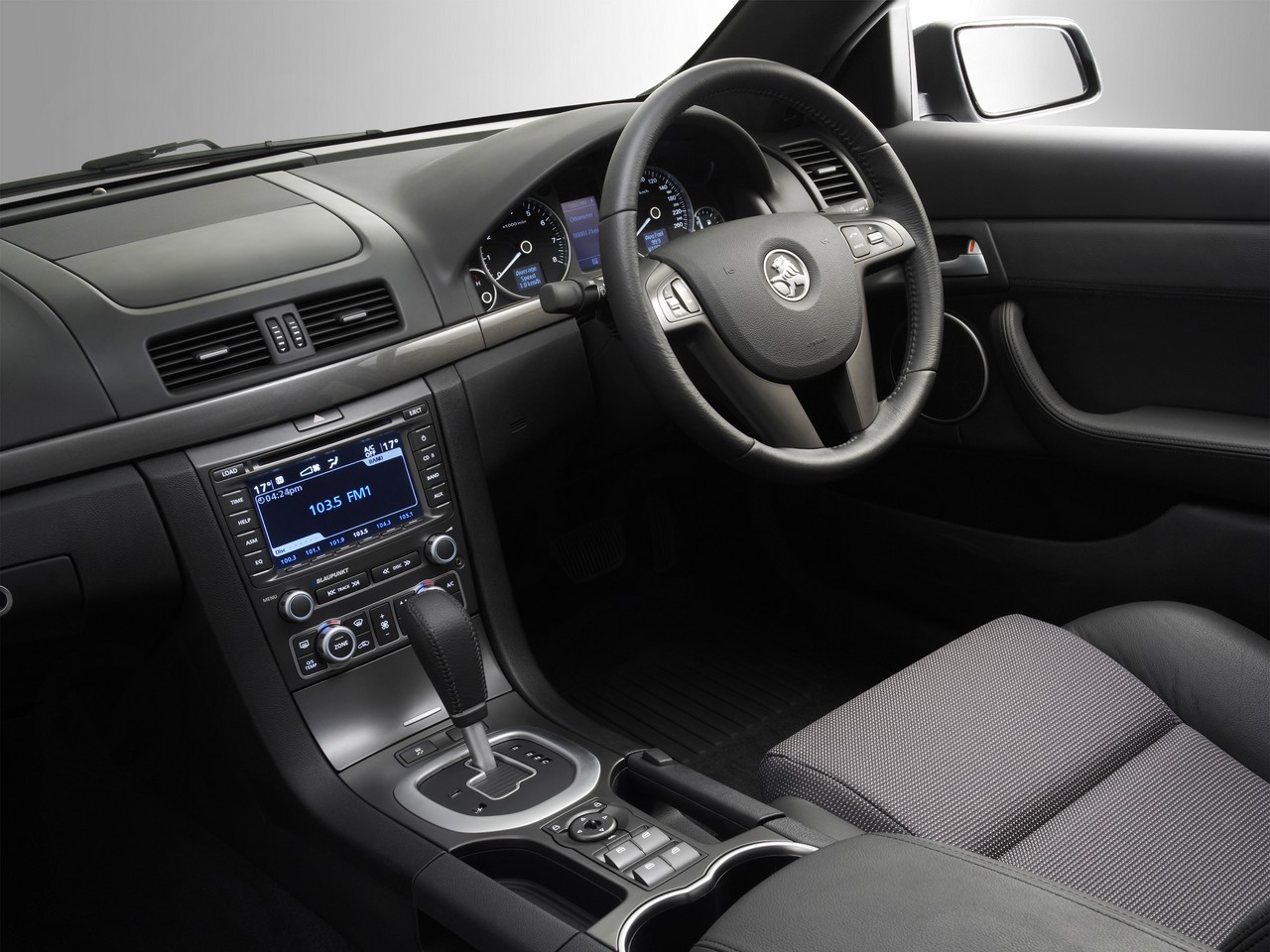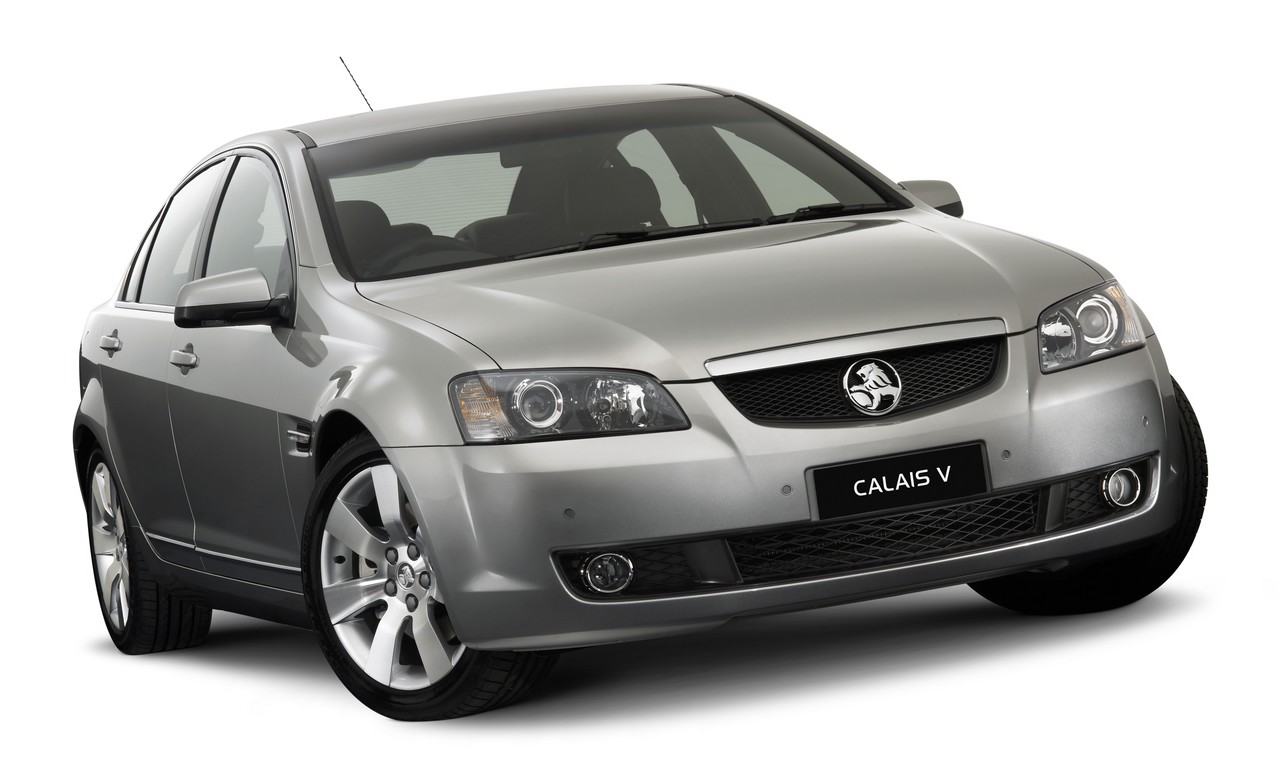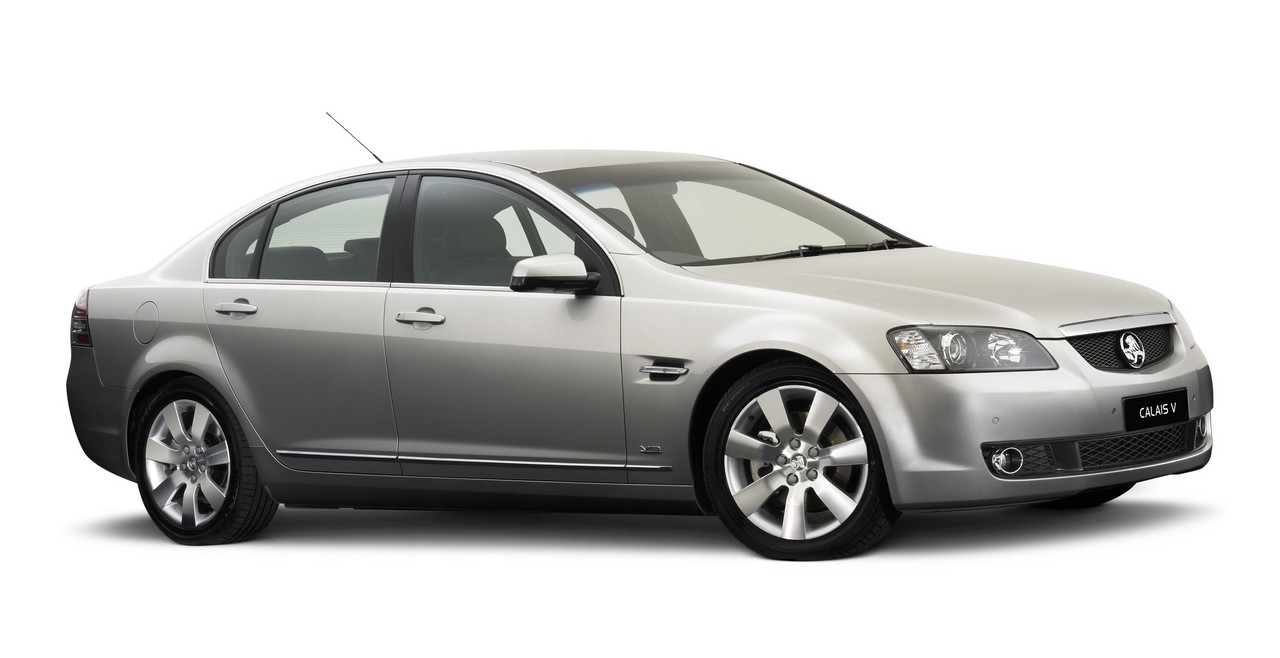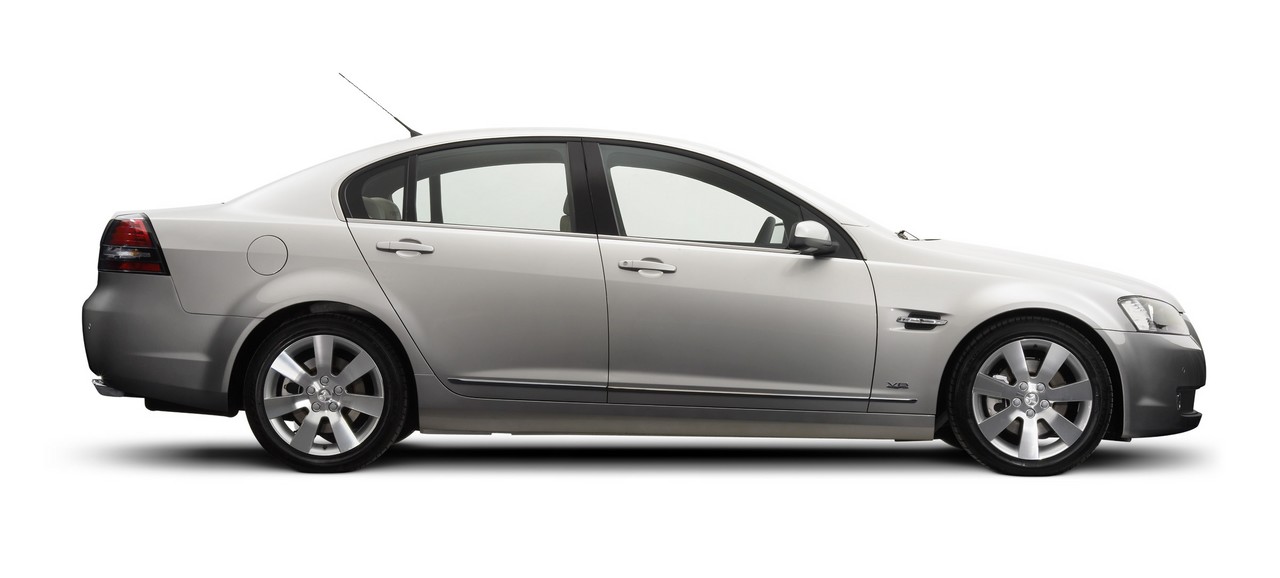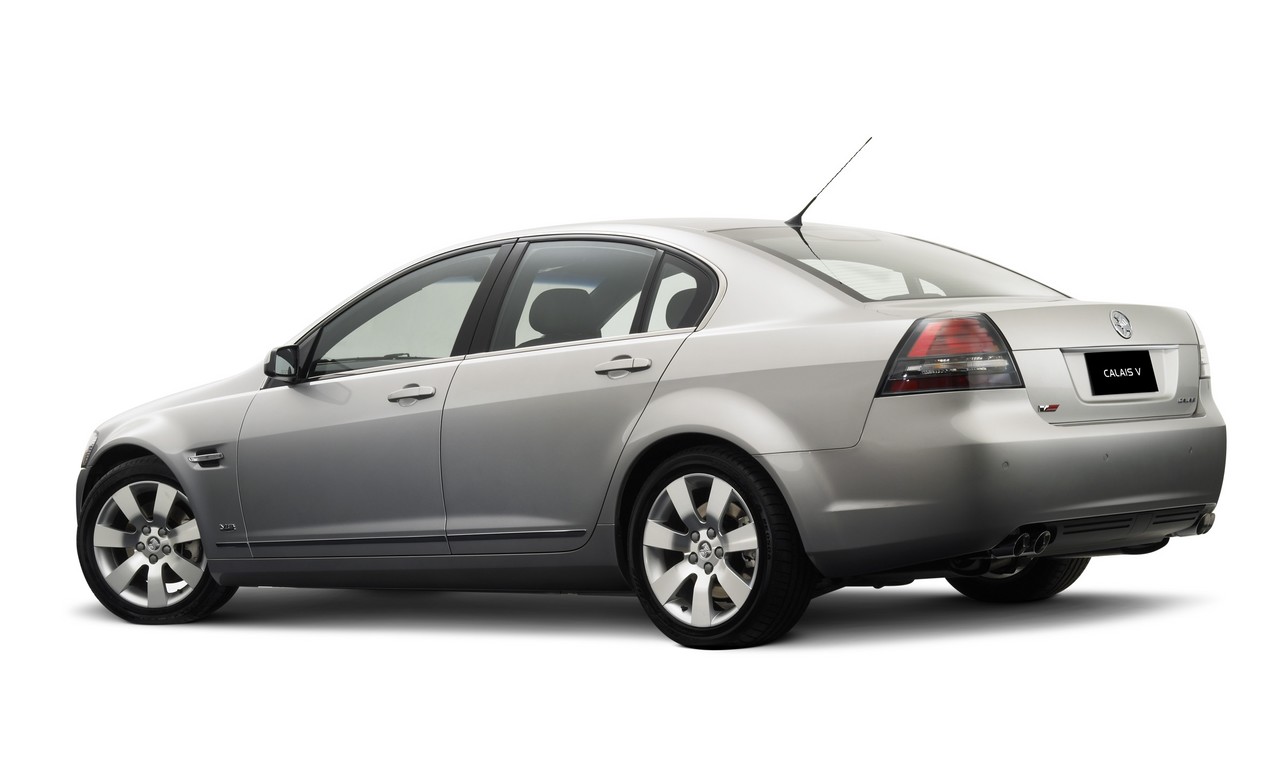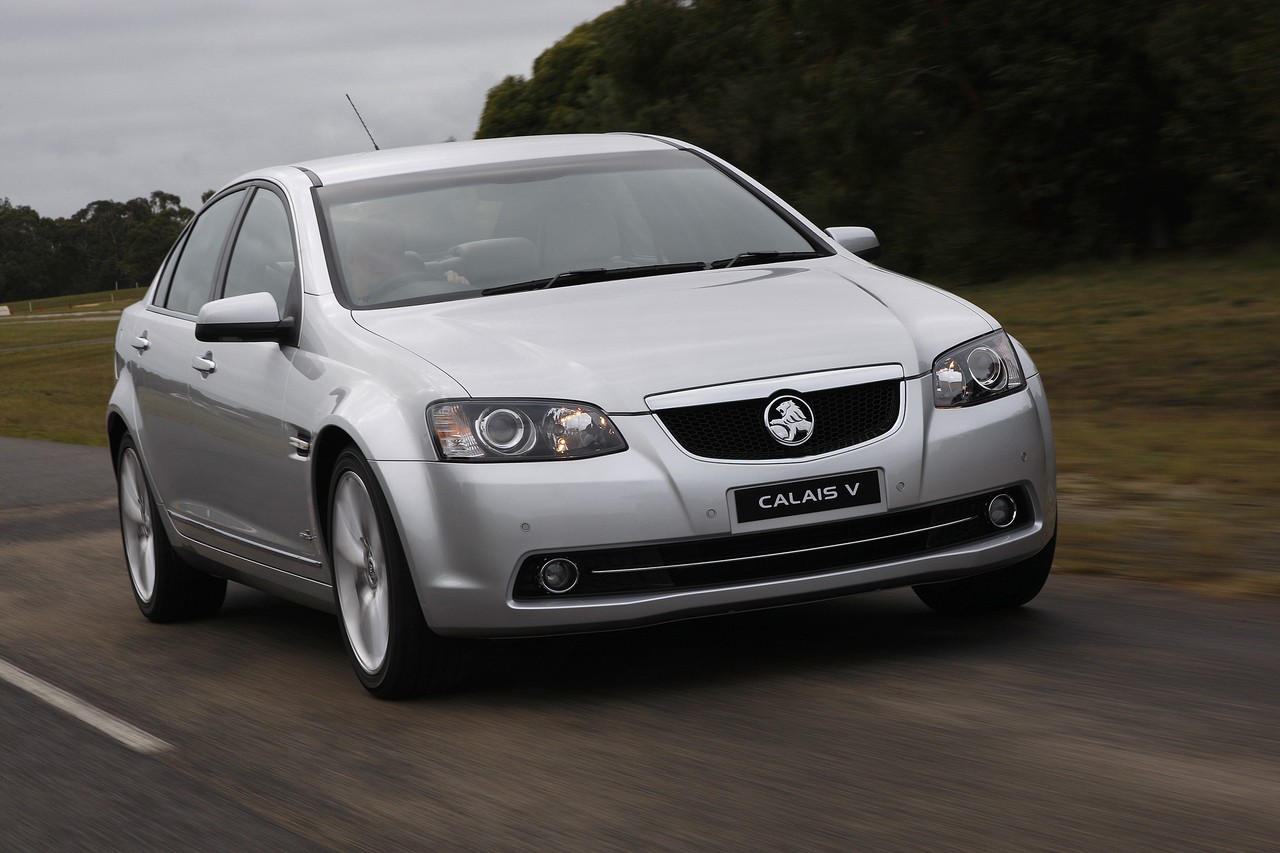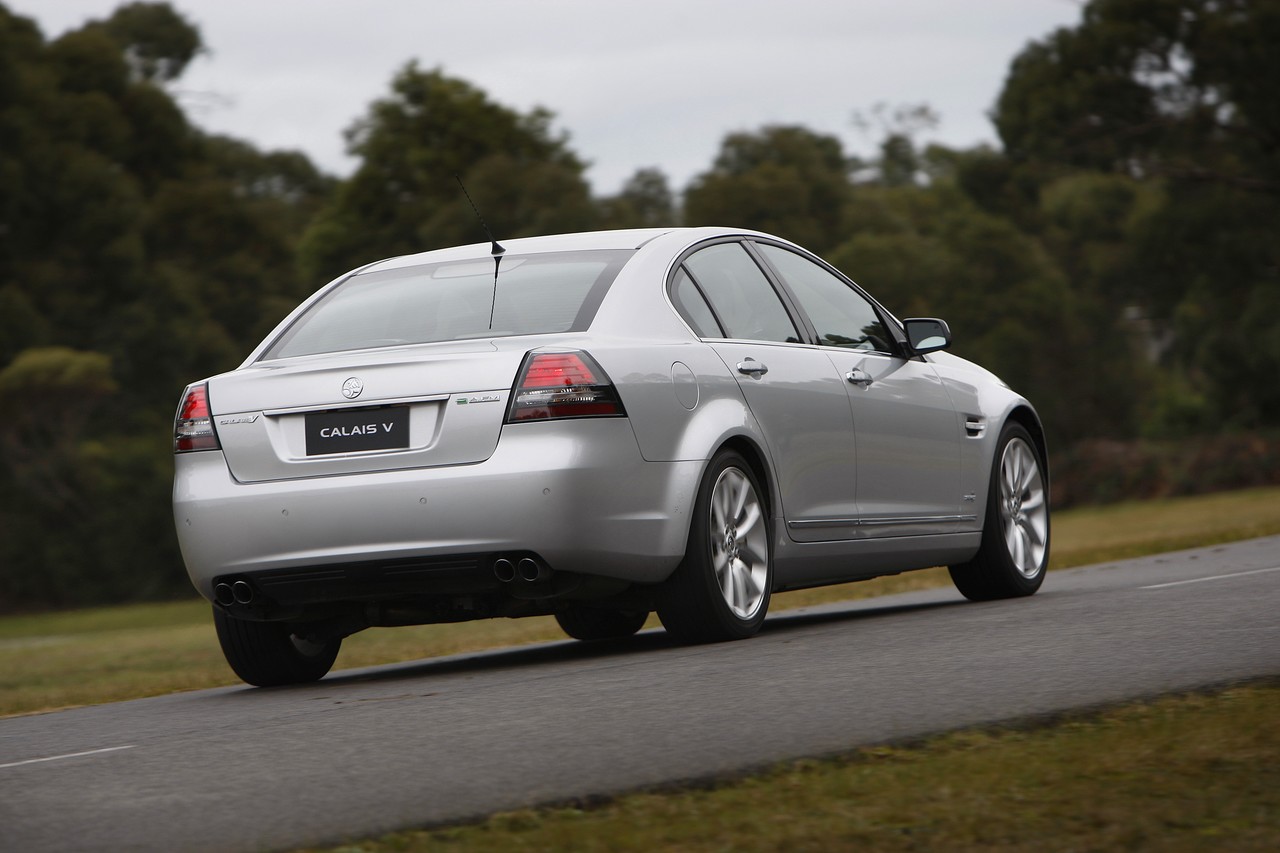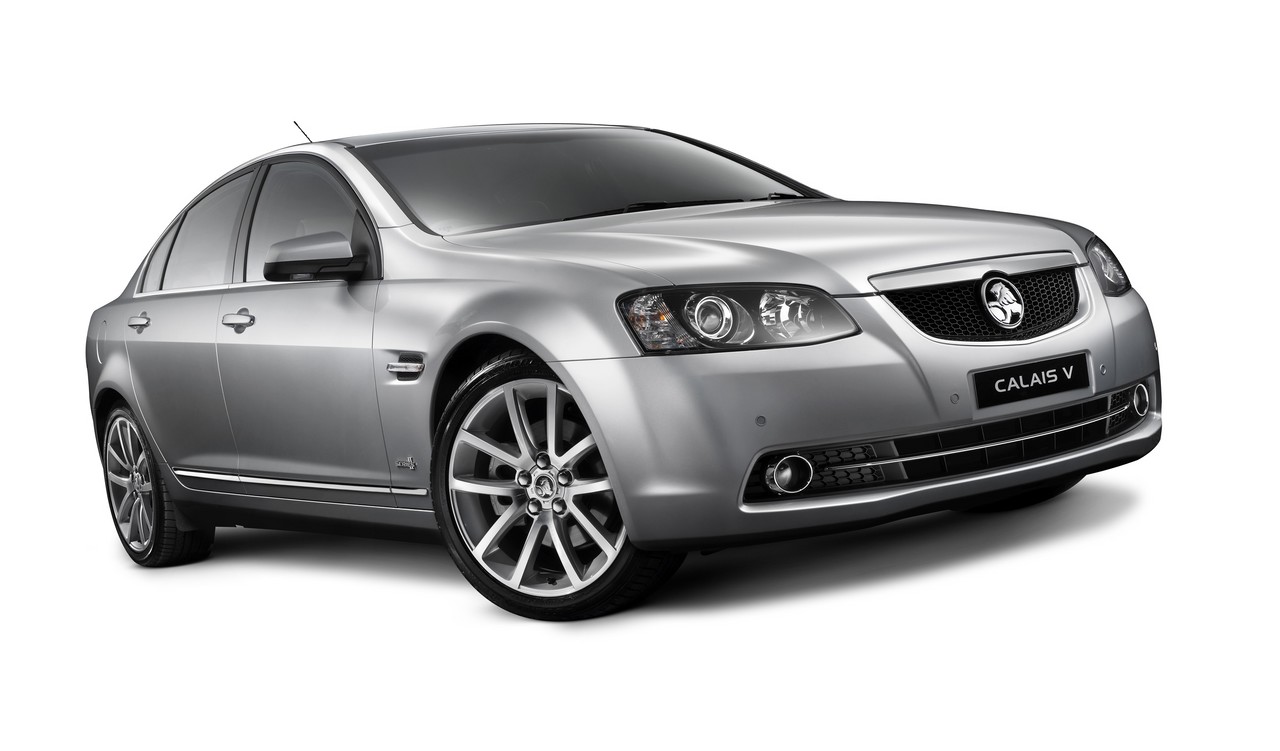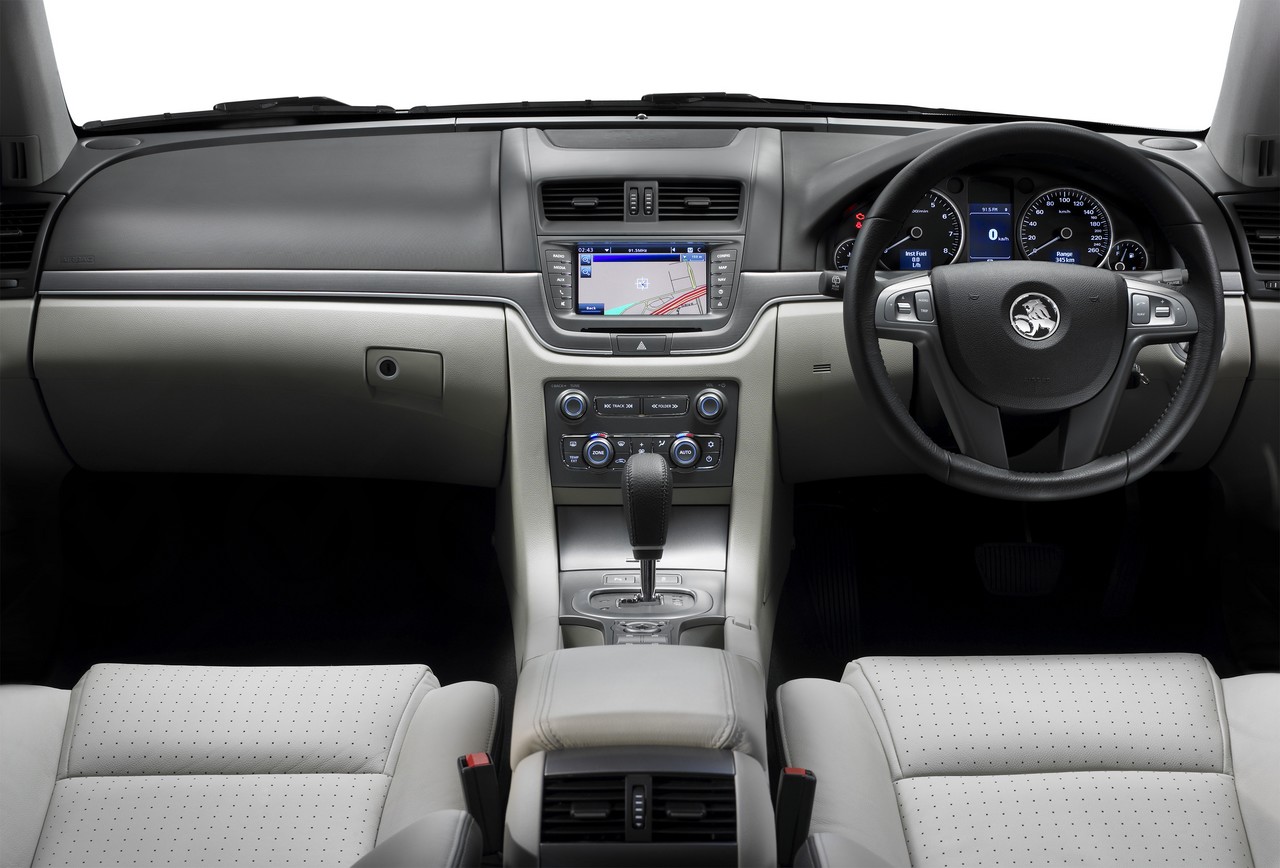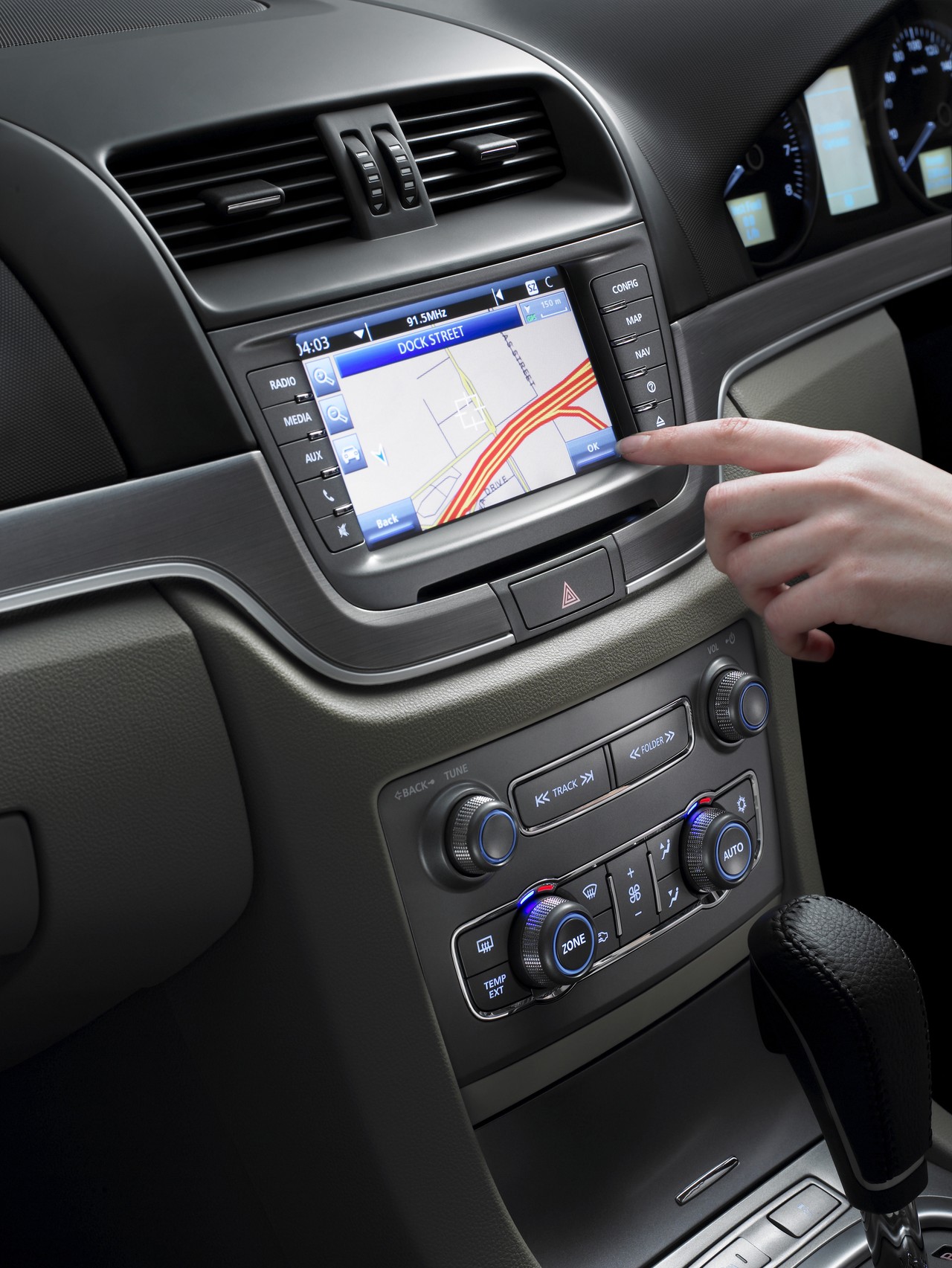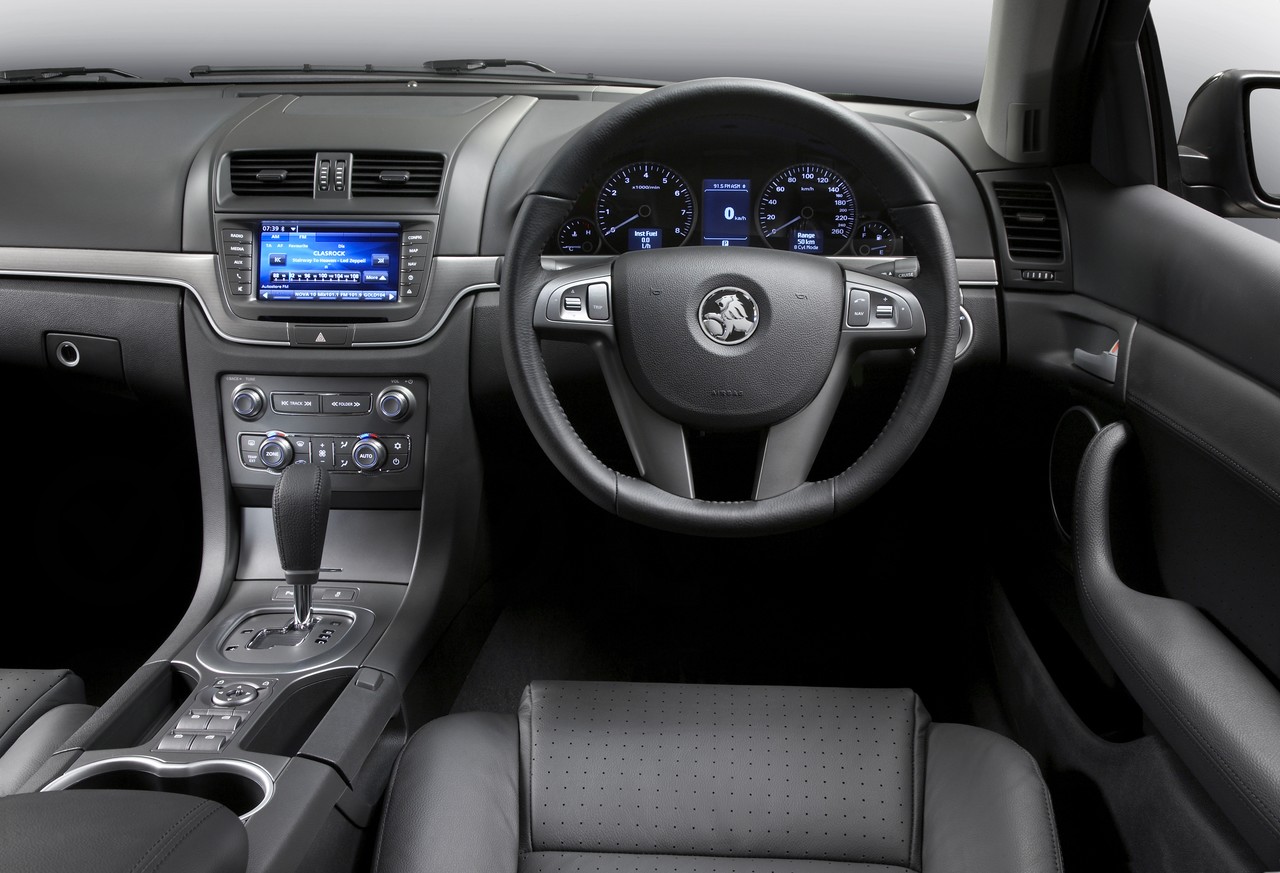
- Firm, unforgiving ride for Calais V
- 3.6-litre ‘Alloytec’ V6 engines lack refinement
- Thick A-pillars impair forward visibility
- Awkward handbrake position and operation
- Heavy body hurts fuel economy
- Carbon deposits on intake valves of direct injection V6 engines
Holden VE.I Calais (2006-10)
Overview
Released in August 2006, the Holden VE Series I (VE.I) Calais was a large sedan (the Sportwagon has been reviewed separately). Manufactured in Elizabeth, South Australia, the rear-wheel drive VE Calais was initially available with 3.6-litre V6 and 6.0-litre V8 petrol engines. As per the table below, the range consisted of standard Calais and Calais V models.
Engines: LY7, LLT, L98 and L76
Of the engines,
- The 3.6-litre ‘Alloytec’ LY7 V6 petrol engine had all-aluminium construction, a forged steel crankshaft, forged powdered metal connecting rods, twin knock control sensors, double overhead camshafts (DOHC), sequential electronic fuel injection, four valves per cylinder, continuously variable intake and exhaust camshaft phasing, electronic throttle control, a compression ratio of 10.2:1 and coil-on-plug ignition. For the VE range, the Alloytec engines were fitted with new variable intake manifolds, Bosch E77 engine control systems with digital sensors for crank and camshaft positions, front and rear oxygen (O2) sensors, retuned harmonic balancers and a new dual exhaust system;
- Introduced in September 2009 (‘MY10’), the 3.6-litre LLT V6 petrol engine had direct injection (Holden’s Spark Ignition Direct Injection or SIDI) – whereby fuel was pressurised and injected directly into the combustion chamber compression – and a compression ratio of 11.3:1;
- The 6.0-litre L98 pushrod V8 engine had all-aluminium construction, flat-topped pistons, forged powered metal connecting rods, a billet steel camshaft, two valves per cylinder, external knock sensors and a compression ratio of 10.4:1; and,
- Introduced in January 2009, the 6.0-litre L76 engine had displacement on demand hardware (Holden’s Active Fuel Management or AFM) that could shut down four cylinders under light throttle loads in higher gears. Although similar to the L98 engine, the L76 engine had a different camshaft profile and a smaller sump.
For the VE range, new engine control systems were introduced which used digital sensors for crank and camshaft positions. Service intervals for the V8 engines were also extended to 15,000 kilometres (previously 10,000 kilometres).
Transmissions
The V6 engines were initially available with five-speed 5L40E automatic transmissions; for the 3.6-litre LLT engines, these were replaced by six-speed 6L50 transmissions. The V8 engines were solely available six-speed 6L80 automatic transmissions. Both the 6L50 and 6L80 transmissions had an ‘Active Select’ function which enabled the driver to perform sequential gearshifts by tapping the gear shifter.
Development and dimensions
Developed in conjunction with the VE Commodore and underpinned by GM’s Zeta platform, the VE Calais had a more rigid body – due to a higher proportion of advanced-strength steels – and an almost 50:50 weight distribution as the engine was positioned low and rearward within the engine bay, a saddle-style fuel tank was introduced and the battery was positioned in the rear of the vehicle.
For greater refinement, the VE Calais had a stiffer engine cradle with six mounting points, acoustic laminated windscreens, new engine covers and bonnet insulators, new sound absorption packages (behind the engine bay and between the transmission and transmission tunnel), insulating carpets and a new double-isolated ZF differential. Tyre pressures were also increased to 250kPa (36.25 psi) to reduce rolling resistance and improve fuel economy.
Compared to the VZ Calais , the VE Calais was 64 mm shorter (at 4900 mm), 57 mm wider (1899 mm), 26 mm taller (1476 mm) and had a 127 mm longer wheelbase (2915 mm).
From September 2009 (‘MY10’), the Calais was fitted with additional engine bay insulation and a quieter muffler, while the standard Calais was fitted with low rolling-resistance tyres for improved fuel economy. The Calais V was also further distinguished from the standard Calais, which was no longer available with the 6.0-litre L98 V8 engine.
Suspension
The VE Calais had ‘Linear Control’ suspension which consisted of double-pivot MacPherson strut-based front suspension with dual lower links (with individual ball joints), a tension link, lateral link and a direct acting stabiliser bar. The rear suspension was a four-link independent system with coil-over shock absorbers, three lateral ball joints per side and a decoupled stabiliser bar. Like the Commodore SV6, SS and SS V, the Calais had sport handling settings.
In September 2009 (‘MY10’), the rear suspension was revised with an additional cross-axis ball joint (in place of a rubber bush in the lower control arm) and the Calais was also fitted with a larger 20 mm rear sway bar.
| Engine | Trans. | Production | Peak power | Peak torque | |
|---|---|---|---|---|---|
| Calais | 3.6-litre LY7 petrol V6 |
5sp auto | Aug 2006 to Sep 2009 | 195 kW at 6500 rpm | 340 Nm at 2600 rpm |
| 3.6-litre LLT petrol V6 SIDI |
6sp auto | Sep 2009 to Sep 2010 | 210 kW at 6400 rpm | 350 Nm at 2900 rpm | |
| 6.0-litre L98 petrol V8 | 6sp auto | Aug 2006 to Dec 2008 | 270 kW at 5700 rpm | 530 Nm at 4400 rpm | |
| 6.0-litre L76 petrol V8 AFM | 6sp auto | Jan 2009 to Sep 2009 | 260 kW at 5700 rpm | 517 Nm at 4400 rpm | |
| Calais V | 3.6-litre LY7 petrol V6 |
5sp auto | Aug 2006 to Sep 2009 | 195 kW at 6500 rpm | 340 Nm at 2600 rpm |
| 3.6-litre LLT petrol V6 SIDI |
6sp auto | Sep 2009 to Sep 2010 | 210 kW at 6400 rpm | 350 Nm at 2900 rpm | |
| 6.0-litre L98 petrol V8 | 6sp auto | Aug 2006 to Dec 2008 | 270 kW at 5700 rpm | 530 Nm at 4400 rpm | |
| 6.0-litre L76 petrol V8 AFM | 6sp auto | Jan 2009 to Sep 2010 | 260 kW at 5700 rpm | 517 Nm at 4400 rpm |
Safety equipment
Standard safety equipment for the VE Calais included dual front airbags, front side airbags, full length curtain airbags (i.e. for front and rear occupants), ABS, electronic brake force distribution, brake assist, electronic stability control, traction control, active front seat head restraints and front seatbelts with pretensioners and load limiters. From November 2008, the Calais was fitted with an energy-absorbing steering column shroud for improved knee protection.
Brakes
VE Calais models with V6 engines were fitted with 298 mm by 30 mm ventilated front brake discs with twin-piston callipers and 302 mm by 22 mm ventilated rear discs with single-piston callipers. Models with V8 engines, however, were fitted with 321 mm by 30 mm front discs and 324 mm by 22 mm rear discs.
ANCAP crash testing
In ANCAP crash testing , post-November 2008 Calais models were awarded a five star adult occupant protection rating with a score of 33.45 out of 37, based on crash testing of the VE Commodore Omega . In the offset crash test, there was a slight risk of serious chest and lower leg injury for the driver. In the side impact and pole tests, maximum points were awarded.
Features
Standard features for the VE Calais included 17-inch alloy wheels, nine speaker sound system with six-stack CD player, MP3-compatibility and auxiliary inputs, dual zone climate control air conditioning, six-way power adjustable front seats, combination fabric and leather seats, cruise control, Bluetooth connectivity, a 6.5-inch multifunction LCD, rear parking sensors, remote central locking, automatic projector headlights, front fog lamps, a height and reach adjustable leather-wrapped steering wheel, power mirrors and windows, trip computer and immobiliser.
The Calais V was further equipped with 18-inch alloy wheels, an eleven speaker sound system, full leather seats, driver’s seat memory settings, rear seat DVD player, front parking sensors, rain-sensing wipers and heated door mirrors which would automatically dip when reversing to show low level hazards.
November 2008 and March 2009 updates
The Calais underwent a minor update in November 2008 (MY09.5), including fixed front seat arm rests and open door pockets; the ‘V-Series’ badges were also replaced with Calais V badges. From March 2009, the space-saver spare tyres were discontinued and replaced with – at the buyer’s choice – either an inflation kit or full-size spare.
2007 Calais V International
In November 2007, an ‘International’ edition of the Calais V was released. Compared to the Calais V, the Calais V International was distinguished by its 19-inch SuperSport alloy wheels, satellite navigation with colour display and Onyx/Light Urban trim combination.
2008 Calais V 60th Anniversary
In May 2008, a 60th Anniversary edition of the Calais V was released; it was distinguished by its 19-inch ‘SuperSport’ alloy wheels, Onyx/Light Urban trim combination, power sunroof, silver highlights on the leather steering wheel spokes, alloy pedals and 60thAnniversary floor mats and badging.
Brochures
- Brochure: Holden VE.I Commodore, Berlina and Calais (July 2006)
- Features: Holden VE.I Berlina and Calais (July 2006)
- Brochure: Holden VE.I Berlina and Calais (October 2008)
Related links
- Holden Media Archive: More Power, More Torque, More Refinement For New Commodore Range (July 2006)
- Holden Media Archive: New Six-Speed Automatic Transmission For V8 Commodores (July 2006)
- Holden Media Archive: Sophisticated New Suspension System For Commodore (July 2006)
- Holden Media Archive: Safety The Priority For Commodore Development (July 2006)
- Holden Media Archive: Holden Calais V 60th Anniversary Special Edition (May 2008)
- Holden Media Archive: Improved Fuel Efficiency For Commodore (October 2008)
- Holden Media Archive: Fuel Saving Technology For V8 Automatic Range From 2009 (October 2008)
- Holden Media: Holden VE/WM MY10 Product Information (September 2009)
Holden VE.II Calais (2010-13)
Overview
Released in September 2010, the VE Series II (VE.II) Calais introduced an updated interior with additional features and improved fuel consumption. Of the engines, the L76 V8 engine was replaced by the flex-fuel capable L77 engine. With flex-fuel capability, the engine could run on a mixture of petrol and ethanol up to E85 (i.e. 85 per cent ethanol and 15 per cent petrol). Although ethanol has a lower energy density than petrol, its higher octane rating enables it to provide greater performance. Furthermore, the idle speed for the 3.6-litre LLT SIDI V6 was reduced.
Fuel consumption for the VE.II Calais was improved through improved aerodynamics (including rear wheel air deflectors and underfloor air flow panels) and a clutched air conditioning compressor. Visually, the VE.II Calais could be identified by its reshaped headlights, larger grille with chrome surround and mesh insert, prominent chrome bonnet header and full-width bright detailing for the lower fascia.
November 2011 update (MY12): 6L45 transmission
In November 2011, flex-fuel capability was introduced for the 3.6-litre V6 engine which was designated LFX . To further improve fuel economy,
- For V6 models, the six-speed 6L50 transmission was replaced by the more efficient 6L45; and,
- The air conditioning system was re-engineered – for V6 and V8 models – to improve its efficiency and draw less power.
| Engine | Years | Trans. | Peak power | Peak torque | |
|---|---|---|---|---|---|
| Calais | 3.6-litre LLT petrol V6 SIDI | 2010-11 | 6sp auto | 210 kW at 6400 rpm | 350 Nm at 2900 rpm |
| 3.6-litre LFX petrol/E85 V6 SIDI | 2011-13 | ||||
| Calais V | 3.6-litre LLT petrol V6 SIDI | 2010-11 | 6sp auto | 210 kW at 6400 rpm | 350 Nm at 2900 rpm |
| 3.6-litre LFX petrol/E85 V6 SIDI | 2011-13 | ||||
| 6.0-litre L77 petrol/E85 V8 AFM | 2010-13 | 6sp auto | 260 kW at 5700 rpm | 517 Nm at 4400 rpm |
Features
Standard features for the VE.II Calais were improved to include 18-inch ten-spoke machined alloy wheels, a 6.5-inch colour touch-screen Holden-iQ system with single CD player, MP3-compatibility, 1 GB flash drive, USB and auxiliary inputs, integrated iPod support, Bluetooth audio streaming, touch-screen dialing, enhanced Bluetooth mobile phone connectivity and leather seats.
The Calais V was further equipped with 19-inch twin five-spoke machined alloy wheels, full-colour navigation mapping with voice control and real-time traffic information and a rear camera.
Calais V Redline handling package
A ‘Redline’ handling package was also introduced for the Calais V which included forged and polished 19-inch ten-spoke alloy wheels with low profile tyres, FE3 suspension tune with high performance dampers and stiffer anti-roll bars, and Brembo two-piece and four-piston front brake calipers with 355 mm inner-vented rotors and chromed window surrounds.
November 2011: Calais MY12
In addition to the mechanical changes described above, the iQ media interface was enhanced in November 2011 with improved Bluetooth connectivity and smartphone-compatibility updates. Although the Calais did not receive any cosmetic changes, the Calais V was fitted with a rear lip spoiler.
Brochures
- Brochure: Holden VE.II Commodore and Calais (September 2010)
- Brochure: Holden VE.II Commodore and Calais (July 2012)
Related links
- Holden Media: VE Series II – The future friendly Commodore (August 2010)
- Holden Media: Model Year 12 Commodore (November 2011)
- Wikipedia.org: Holden VE Commodore
